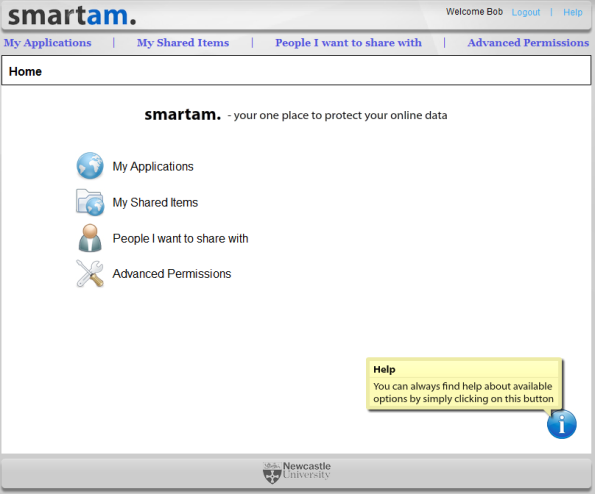SMART User Experience Study is open
We are happy to announce that SMART Authorization Manager (SMART AM) is ready for its first public evaluation. It’s exciting to finally get to this step where you can actually show your system to others and gather some useful feedback.
Our app is available at http://vs-smartpm.ncl.ac.uk:9001/. Drop us an email and we’ll provide you with the necessary credentials. You can also find the flyer here.
At this moment, SMART AM offers only basic functionality but we keep on working hard to provide some new exciting features!
Are you interested in evaluation of the SMART AM’s interface? You see many usability issues and would like to share them with us? Or maybe you’re just curious how our system works? In any case, let us now and participate in our study! Help us make this project successful! 🙂
Why would you want to use SMART AM?
Today’s Web applications allow you to create and publish various information and resources on the Web. For example, you use Facebook to store photos or personal information and Google Docs to create online documents. You can define that your Facebook photos should be shared with your family only while personal information from Facebook and documents stored at Google Docs should be shared with professional colleagues. Moreover, you can impose additional constraints on these sharing settings by defining that only those who are over 18 years old would have access to some photos.
If you want to share Facebook photos, Google Docs files and Cozi shopping list with your friend Alice, you don’t need to share it three times, with Alice at Facebook and Alice at Google and … how many times more Alice? Just add her once.
Google Analytics
To have better view on who and how uses SMART AM we have decided to introduce Google Analytics (and integrate it with Adobe Flex – technology that stands behind our UI). Google Analytics allow us to collect statistics about all kinds of different events, e.g. how many security policies were created, how many items users shared, which pre-defined restriction was the most popular one, etc.
-
July 20, 2010 at 4:58 pmUsing Microsoft Surface for UMA « SMART – Student-Managed Access to Online Resources

